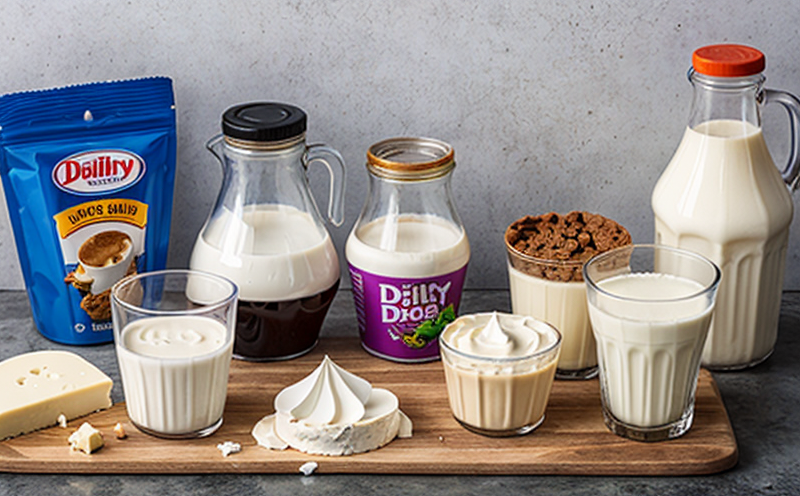ISO 27656 Mercury Residue Analysis in Dairy Samples
The presence of mercury residues in dairy products can pose significant health risks to consumers. ISO 27656 provides a standardized approach for the accurate and precise determination of mercury residues in dairy samples, ensuring compliance with international food safety standards.
Mercury contamination can arise from various sources including environmental pollution, improper handling during production processes, or through the use of certain pharmaceuticals. The detection and quantification of these residues are critical to maintaining product quality and consumer trust. This service ensures that any potential risks associated with mercury exposure are minimized by providing reliable analytical data.
The methodology outlined in ISO 27656 involves several key steps: sample preparation, digestion if necessary, dilution where required, and subsequent analysis using atomic absorption spectrophotometry (AAS). The selection of appropriate methods depends on the type of matrix being analyzed as well as the level of accuracy desired. For instance, direct sample introduction into the AAS instrument may suffice for low concentrations whereas digestion followed by dilution might be necessary for higher levels.
Accurate quantification requires careful consideration of several factors including but not limited to sample handling procedures, reagent selection, and instrumental settings. Proper calibration of equipment is essential for obtaining reproducible results which conform to internationally recognized standards such as those specified in ISO 27656.
The importance of this testing cannot be overstated given its role in safeguarding public health by preventing the spread of harmful contaminants within the food chain. By adhering strictly to established protocols and utilizing advanced analytical techniques, we can ensure that our clients receive trustworthy results that enable them to make informed decisions regarding their products.
Scope and Methodology
| Step | Description |
|---|---|
| Sample Preparation | This involves cleaning the sample containers, homogenizing the samples if necessary, and reducing them to an appropriate size for analysis. |
| Digestion (if required) | In cases where matrix effects could interfere with accurate measurement, digestion of the sample may be needed prior to analysis. |
| Dilution (if necessary) | If preliminary testing indicates that the concentration exceeds the detection limit of the analytical instrument, dilution will be carried out accordingly. |
| Analysis Using Atomic Absorption Spectrophotometry (AAS) | The final step involves measuring the absorbance at a specific wavelength characteristic for mercury ions. Calibration curves are created using known concentrations of mercury standards to determine the actual amount present in each sample. |
Throughout these stages, strict adherence to prescribed procedures is paramount to achieve accurate and reliable results that meet or exceed all relevant regulatory requirements.
Why Choose This Test?
The ISO 27656 standard offers numerous advantages over other methods for mercury residue analysis in dairy products. Firstly, it provides a robust framework for ensuring consistent and accurate measurements across different laboratories worldwide. Secondly, its rigorous protocol helps minimize the risk of contamination during sample preparation, digestion, dilution, and ultimately the analytical process itself.
Furthermore, this method has been validated against various certified reference materials (CRMs), thus providing strong evidence of its reliability and precision. Lastly, by implementing ISO 27656, organizations demonstrate their commitment to maintaining high standards of quality control and assurance which can enhance customer confidence and regulatory compliance.
Use Cases and Application Examples
This service finds application in various scenarios including:
- Quality Assurance Programs aimed at monitoring the safety of dairy products throughout their lifecycle.
- Regulatory Compliance Measures to ensure that imported or exported dairy goods meet local laws and regulations regarding heavy metal limits.
- R&D Projects focused on developing new formulations or improving existing processes with respect to mercury content.
A practical example would be a large-scale milk producer who wishes to verify whether their operations are compliant with EU Directive 2017/625 concerning the presence of heavy metals in foodstuffs. By leveraging our expertise in ISO 27656, they can ensure that their products remain safe and trusted by consumers.





